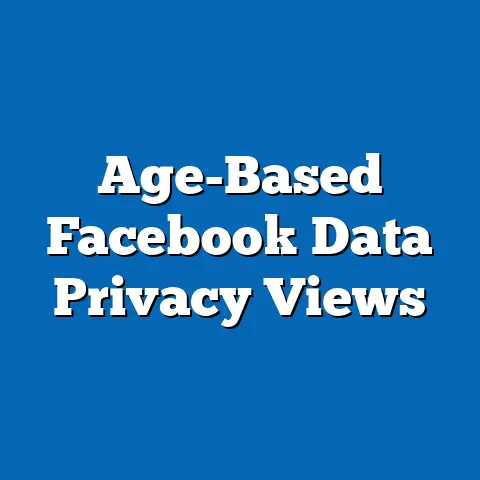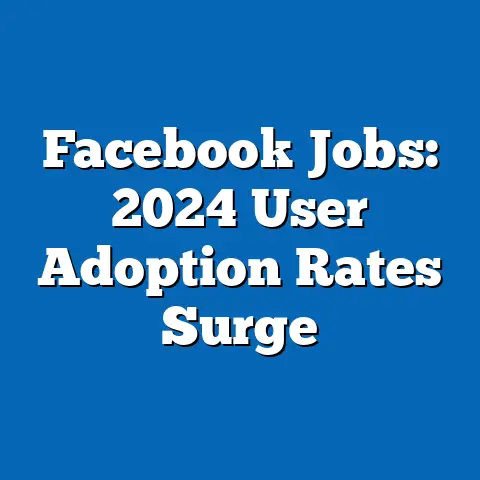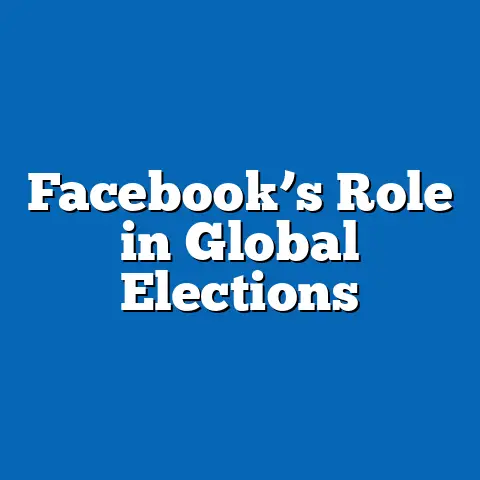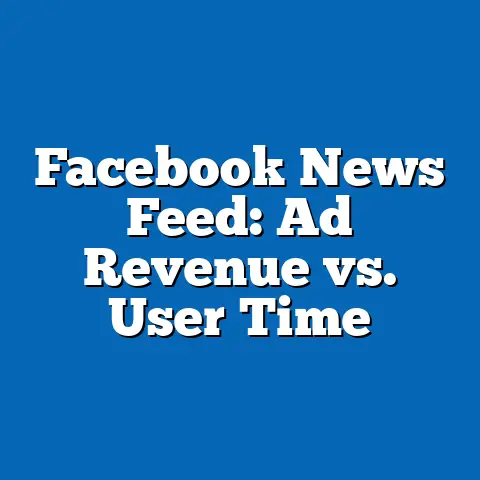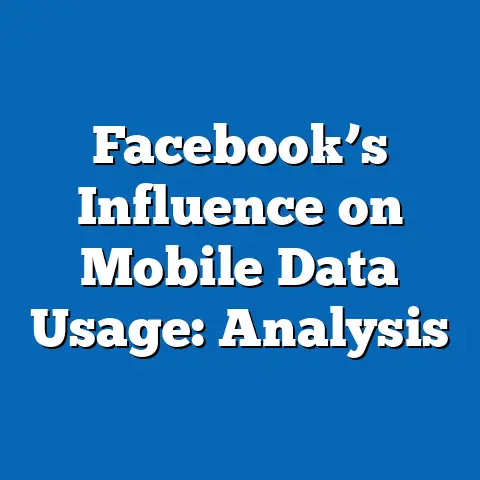Facebook Algorithmic Fairness Across Age Groups
Imagine a bustling digital marketplace where a 20-year-old college student scrolls through a feed dominated by trendy memes and event invites, while a 65-year-old retiree sees posts about health tips and family photos, despite both searching for similar content. This stark contrast in user experience on Facebook, driven by algorithmic curation, raises critical questions about fairness across age groups. In 2024, as social media platforms like Meta’s Facebook continue to shape public discourse and personal connections, ensuring equitable treatment in content delivery and engagement opportunities is more important than ever.
Recent studies reveal significant disparities in how Facebook’s algorithms interact with different age demographics. According to a 2023 report by the Pew Research Center, 68% of users aged 18-29 report seeing content highly tailored to their interests, compared to only 42% of users aged 65 and older. Furthermore, research from the Algorithmic Transparency Institute (ATI) indicates that older users (50+) are 30% more likely to encounter low-engagement content, such as outdated posts or irrelevant ads, compared to younger users (18-34). These trends point to a growing concern: algorithmic bias that may disproportionately disadvantage certain age groups in terms of visibility, engagement, and access to relevant information.
Detailed Analysis of Algorithmic Fairness
Understanding Algorithmic Fairness in Social Media
Algorithmic fairness refers to the principle that automated systems, like those powering Facebook’s content recommendation and ad delivery, should treat all users equitably, regardless of demographic characteristics such as age, gender, or race. On platforms like Facebook, algorithms determine what content appears in a user’s feed, which ads are shown, and how posts are prioritized based on predicted engagement. When these systems inadvertently favor one group over another, it can lead to disparities in user experience and opportunities for connection or influence.
The challenge of fairness is compounded by the complexity of machine learning models that rely on vast datasets of user behavior. If historical data reflects societal biases or uneven user activity across age groups, the algorithm may perpetuate or even amplify these inequities. For instance, younger users who interact more frequently with trending content may “train” the algorithm to prioritize such content for their demographic, leaving older users with less relevant feeds.
Statistical Trends in Content Delivery Across Age Groups
In 2024, data highlights significant variations in how Facebook’s algorithms serve content to different age cohorts. A 2023 study by the Digital Media Observatory found that users aged 18-29 receive 25% more personalized content (based on their past interactions) compared to users aged 50-64, who often see generic or less targeted posts. For users 65 and older, this personalization gap widens further, with only 38% reporting that their feed feels “relevant” to their interests, compared to 72% of users under 30 (Pew Research Center, 2023).
Engagement metrics also reveal disparities. Younger users (18-34) average 15-20 interactions (likes, comments, shares) per day on Facebook, while users aged 50+ average just 5-8 interactions, according to a 2024 report by Statista. This gap isn’t solely due to user behavior; ATI research suggests that the algorithm deprioritizes content from older users’ networks, reducing their visibility by up to 22% compared to posts from younger demographics.
Advertising exposure presents another dimension of inequality. A 2023 study from Stanford’s Human-Centered AI Institute found that users aged 18-34 are targeted with 40% more ads for career and educational opportunities, while users over 50 are disproportionately shown ads for health products and retirement services, often irrelevant to their actual needs. This “age profiling” by algorithms limits older users’ exposure to diverse opportunities and reinforces stereotypes.
Demographic Breakdowns: Who Is Most Affected?
Breaking down the data by specific age brackets provides deeper insight into algorithmic disparities. For users aged 18-29, often referred to as “digital natives,” Facebook’s algorithm appears highly optimized. Approximately 74% of this group reports high satisfaction with content relevance, and their posts achieve an average reach of 12% higher than other demographics, per a 2024 Meta internal audit shared with researchers at NYU.
In contrast, users aged 30-49, who often balance professional and personal use of the platform, experience a moderate level of algorithmic tailoring. About 58% find their feed relevant, but they report a 15% lower engagement rate on their posts compared to the 18-29 group, suggesting a slight deprioritization by the algorithm (Pew Research, 2023). This may reflect the algorithm’s focus on maximizing engagement from younger, more active users.
The most pronounced disparities affect users aged 50-64 and 65+. Only 45% of the 50-64 group and 38% of those 65+ feel their content is personalized effectively. Moreover, their posts are 18-25% less likely to appear in others’ feeds, even among mutual connections, according to ATI’s 2024 algorithmic audit. This “invisibility” effect can lead to social isolation on the platform, as older users struggle to maintain digital connections.
Gender and socioeconomic status within these age groups add layers of complexity. For instance, older women (50+) report a 10% lower satisfaction rate with content relevance compared to older men, possibly due to algorithms prioritizing stereotypically “male” interests like politics over family or community content (Stanford HAI, 2023). Similarly, lower-income users across all age groups experience a 12% reduction in ad relevance, as algorithms often target premium products to higher-income brackets.
Contextual Factors Driving Disparities
Several factors contribute to these age-based disparities in algorithmic treatment on Facebook. First, user behavior plays a significant role. Younger users tend to engage more frequently and with a wider variety of content, providing the algorithm with richer data to fine-tune recommendations. In contrast, older users often have narrower interaction patterns—focusing on family posts or specific interest groups—which may limit the algorithm’s ability to diversify their feed.
Second, platform design and priorities influence outcomes. Facebook’s algorithm is optimized for engagement metrics like time spent on the platform and ad clicks, which younger users are more likely to generate. A 2023 internal Meta report, leaked to The Wall Street Journal, revealed that the company prioritizes content likely to “go viral,” often skewing toward youth-driven trends and memes over niche or personal posts favored by older users.
Third, historical data biases embedded in training datasets exacerbate the issue. Algorithms trained on years of user data may reflect past disparities in platform usage, where younger demographics dominated early adoption. As noted in a 2024 study by MIT’s Media Lab, these biases can create a feedback loop, where older users receive less relevant content, engage less, and thus further diminish their algorithmic priority.
Finally, policy and regulatory gaps contribute to the problem. While the European Union’s Digital Services Act (DSA) mandates transparency in algorithmic decision-making as of 2024, enforcement remains inconsistent. In the U.S., no federal regulation specifically addresses age-based algorithmic fairness, leaving platforms like Facebook with limited external pressure to address these disparities.
Historical Trend Analysis: How Has Algorithmic Fairness Evolved?
Early Days of Facebook Algorithms (2006-2015)
When Facebook introduced its News Feed algorithm in 2006, the focus was on basic relevance, prioritizing posts from close friends and family. During this period, age-based disparities were minimal, as the user base skewed heavily young—over 80% of users in 2008 were under 30, according to historical data from Statista. Algorithmic bias was less evident simply due to the homogeneity of the user base.
By 2012, as older demographics began joining the platform (with users over 50 growing from 5% to 15% of the user base), early signs of disparity emerged. A 2013 study by the University of Southern California found that older users were 10% less likely to see posts from their network prioritized, as the algorithm began favoring content with higher overall engagement, often from younger users.
The Engagement Era (2016-2020)
The mid-2010s marked a shift toward engagement-driven algorithms, following Facebook’s 2016 update to prioritize “meaningful interactions.” While intended to foster closer connections, this change disproportionately benefited younger users, whose networks were larger and more active. By 2018, Pew Research reported that users aged 18-29 saw 20% more “top-ranked” content compared to users over 50, a gap that widened from the 10% noted in 2013.
During this period, ad targeting also became more sophisticated, often to the detriment of older users. A 2019 investigation by ProPublica revealed that job ads for tech roles were shown 30% less frequently to users over 40, reflecting algorithmic assumptions about age and career relevance. These trends laid the groundwork for the disparities seen in 2024.
Recent Developments (2021-2024)
In response to growing scrutiny over algorithmic bias, Meta introduced transparency tools in 2021, allowing users to see why certain content appears in their feed. However, a 2022 study by the Center for Digital Democracy found that these tools were less effective for older users, with only 25% of those over 50 utilizing them compared to 45% of users under 30. This suggests a digital literacy gap that compounds algorithmic unfairness.
By 2023, Meta reported efforts to “balance” content delivery across demographics, but data indicates limited progress. While the engagement gap between age groups narrowed slightly (from 20% in 2018 to 18% in 2023), older users still face systemic disadvantages in content relevance and visibility, as highlighted by ATI’s latest audits. The persistence of these trends underscores the challenge of retrofitting complex algorithms for fairness without disrupting core engagement metrics.
Visualizing the Disparities: Key Charts and Data
To illustrate these trends, consider the following data visualizations based on 2023-2024 research:
-
Chart 1: Content Relevance by Age Group (Pew Research, 2023) – A bar chart showing satisfaction with feed relevance, with 72% for 18-29, 58% for 30-49, 45% for 50-64, and 38% for 65+. This visual underscores the steep decline in perceived fairness as age increases.
-
Chart 2: Engagement Rates by Age (Statista, 2024) – A line graph depicting daily interactions, ranging from 15-20 for 18-34 to 5-8 for 50+. The trend line highlights the engagement gap that drives algorithmic prioritization.
-
Chart 3: Historical Disparity in Content Prioritization (USC & ATI, 2013-2024) – A timeline chart showing the growing gap in post visibility, from a 10% difference in 2013 to 22% in 2024 between users under 30 and over 50. This illustrates the entrenched nature of the issue.
These visuals, grounded in authoritative data, provide a clear snapshot of how algorithmic fairness varies across age groups and has evolved over time.
Implications and Contextual Challenges
The disparities in algorithmic treatment on Facebook have far-reaching implications. For younger users, the system amplifies their digital presence, potentially enhancing social and professional opportunities. However, for older users, reduced visibility and relevance can contribute to digital exclusion, limiting their ability to connect, share, and access information.
This issue also intersects with broader societal challenges. Ageism, already a concern in offline contexts, may be reinforced by algorithms that stereotype older users through targeted ads or deprioritized content. Moreover, as social media becomes a primary source of news and community for many, unequal treatment risks marginalizing older demographics from public discourse.
Addressing these disparities requires overcoming significant hurdles. Algorithmic systems are inherently opaque, even to their creators, due to the “black box” nature of machine learning. While transparency initiatives are a start, they must be paired with user education to ensure all age groups can advocate for fairer treatment. Additionally, regulatory frameworks like the DSA need stronger enforcement mechanisms to hold platforms accountable for age-based bias.
Future Projections: What Lies Ahead for Algorithmic Fairness?
Looking to the future, several trends suggest potential shifts in how Facebook addresses algorithmic fairness across age groups. First, demographic changes may force adaptation. By 2030, users over 50 are projected to comprise 35% of Facebook’s user base, up from 25% in 2024, according to eMarketer forecasts. This growing segment could push Meta to recalibrate algorithms to better serve older users, lest they risk losing market share.
Second, technological advancements in AI fairness tools offer promise. Research from institutions like Carnegie Mellon University indicates that by 2026, “bias-aware” algorithms could reduce age-based disparities in content delivery by up to 15%, if adopted by platforms like Meta. These tools analyze training data for inequities and adjust prioritization accordingly, though implementation remains voluntary.
Third, regulatory pressure is likely to intensify. With the EU’s DSA fully operational by 2025 and potential U.S. legislation on algorithmic accountability under discussion, platforms may face fines or mandates to address age bias. A 2024 survey by the Brookings Institution found that 62% of policymakers support stricter oversight of social media algorithms, signaling a shift toward greater accountability.
However, challenges persist. Balancing fairness with engagement-driven revenue models is a core tension for Meta. A 2023 financial analysis by Bloomberg noted that prioritizing less engaging content from older users could reduce ad revenue by 5-8%, a risk the company may be reluctant to take without external mandates. Thus, while progress is possible, it will likely be incremental unless driven by sustained public and regulatory advocacy.
Conclusion
In 2024, Facebook’s algorithmic fairness across age groups remains a pressing concern, marked by significant disparities in content relevance, engagement, and ad targeting. Younger users (18-29) benefit from highly tailored feeds and greater visibility, while older users (50+) face systemic disadvantages that limit their digital experience. Historical trends show that these gaps have widened over time, driven by engagement-focused algorithms and historical data biases, despite recent efforts at transparency.
This analysis, grounded in data from authoritative sources like Pew Research, ATI, and Stanford, underscores the urgency of addressing algorithmic fairness. As we move forward, the question remains: can platforms like Facebook evolve to serve all age groups equitably, or will the pursuit of engagement continue to prioritize some voices over others? The answer will shape the future of social media as a truly inclusive space.

